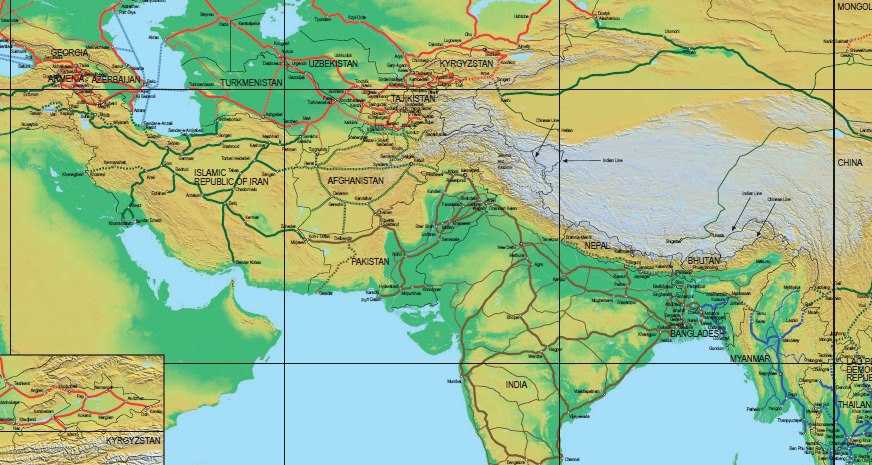In the intricate dance of global geopolitics and economics, the G20 Summit’s recent unveiling of the Partnership for Global Infrastructure Investment has set the stage for a new era of trade. While this initiative, backed by the US and the EU, promises to reshape trade dynamics between Europe, the Middle East and India, there’s another project that demands equal attention: the Trans-Asian Railway. Within this vast network, Armenia’s corridor emerges as a linchpin, holding the key to unlocking unparalleled trade opportunities for countries like China, India, Iran and Georgia.
The Trans-Asian Railway (TAR) Network is an ambitious project that aims to create an integrated freight railway network across Europe and Asia. The Intergovernmental Agreement on the Trans-Asian Railway Network opened for signature on 10 November 2006 in Busan, Republic of Korea. The Intergovernmental Agreement on the Trans-Asian Railway Network entered into force on 11 June 2009.

Taken from Red Lantern ANALYTICA
Spearheaded by the United Nations Economic and Social Commission for Asia and the Pacific (UNESCAP), the project has garnered significant attention and participation from numerous countries, including Armenia. And why should Armenia actively push for this project? Let’s delve into the reasons.
With the continued surge of containerized freight through the ports of the Asia-Pacific region, there’s a pressing need for efficient transport networks. The TAR Network offers a solution, providing a seamless connection between major trading hubs. For Armenia, this means easier access to both European and Asian markets, potentially boosting exports and strengthening its position in global trade. By participating in the TAR Network, Armenia can foster stronger ties with neighboring countries. This not only promotes economic cooperation but also strengthens diplomatic relations, ensuring a more stable and prosperous region.
The TAR project offers countries an opportunity to upgrade existing railway infrastructure or construct new ones. For Armenia, this could translate to improved domestic transport systems, fostering internal trade and connectivity. The project emphasizes the importance of finding synergies between national infrastructure projects and international corridors. By being a part of this initiative, Armenia can collaborate with other nations, sharing knowledge, technology and best practices. This cooperative approach can accelerate infrastructure development and ensure that the railway systems are of international standards.
The Intergovernmental Agreement on the Trans-Asian Railway Network provides a framework for countries to discuss and plan the future expansion, upgrading and operation of the TAR Network. Participation in such a significant international project elevates Armenia’s status on the global stage. It showcases the country’s commitment to global development, cooperation and its vision for a connected future.
The Trans-Asian Railway Network is more than just a transport project. It’s a vision for a connected, integrated and prosperous Asia and Europe. For Armenia, it presents a golden opportunity to boost trade, improve infrastructure, foster regional ties and elevate its status on the global stage. It’s an opportunity that Armenia should actively pursue and champion. The Trans-Asian Railway, passing through Armenia, promises to bring significant foreign investment, a boost to the domestic economy as well as international trade. For neighboring countries, this means faster, more efficient trade routes, reducing costs and time.

Taken from Red Lantern ANALYTICA
Armenia’s participation can foster enhanced diplomatic relations with neighboring nations. This is especially crucial given the historical tensions in the region. Infrastructure projects of this magnitude have the potential to bring stability to regions. By promoting economic interdependence, the Trans-Asian Railway can play a role in ensuring the security of its member countries. For Armenia, this means a step towards a more stable, secure future.
For India, the Armenian corridor of the Trans-Asian Railway provides a direct, fastest and the most efficient route to Europe. This not only reduces transit times but also offers a cost-effective solution, making trade more lucrative for Indian businesses. Georgia, with its aspirations to be a significant player in Eurasian trade, stands to benefit immensely. The Armenian corridor offers Georgia a streamlined route to both Asia and Europe, bolstering its position as a key transit nation. For Iran, the corridor through Armenia can serve as a bridge to European markets. Given the sanctions and trade restrictions Iran has faced, this railway offers a fresh avenue for trade, fostering economic growth and stability. China’s expansive Belt and Road Initiative seeks to dominate trade routes across Asia, Africa and Europe. The Trans-Asian Railway, especially the Armenian corridor, can complement this vision, providing China with a shorter and more efficient route to key markets.
The Armenian corridor’s strategic importance goes beyond just trade. It’s a symbol of regional cooperation, diplomatic ties and a shared vision for a prosperous future. By facilitating trade, it can usher in an era of economic interdependence, fostering peace and stability in a historically volatile region.
The Trans-Asian network is not just a testament to international cooperation, it is a civilizational corridor that binds the tapestry of human history. The network connects nations that are heirs to some of the world’s most ancient and influential civilizations. The project serves as a reminder that while civilizations have their distinct identities, they have always been interconnected, influencing and learning from each other. The project, by connecting these ancient civilizations, not only promotes economic growth and cooperation but also fosters a deeper understanding and appreciation of our shared human heritage.
With this perspective, the emphasis on the Armenian corridor becomes even more significant. Armenia, with its rich history, served as a bridge between the East and West, making it a pivotal link in this civilizational journey.
The G20-backed corridor is a monumental step towards redefining global trade routes. By connecting powerhouses like India with Europe and the Middle East, it aims to expedite trade and foster economic cooperation. However, the Trans-Asian Railway, with Armenia at its heart, offers a complementary and strategic route that can further enhance this vision.
While the G20’s Partnership for Global Infrastructure Investment is undoubtedly a game-changer, the Trans-Asian Railway’s Armenian corridor is the key to unlocking the true potential of Eurasian trade. For nations like India, Georgia, Iran and China, this corridor offers unparalleled opportunities. As the world stands at the cusp of a new trade era, it’s time to recognize and champion the immense potential that Armenia’s corridor brings to the table.
(Author- Hayk Chobanyan, is the former Minister of High-Tech Industry of Armenia. Mr. Chobanyan supports several initiatives of the Network State.)

